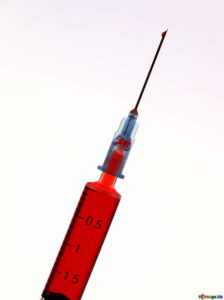 Largest real-world study of COVID-19 vaccine safety published. They compared “884,828 vaccinated individuals aged 16 and over [who] were carefully matched with 884,828 unvaccinated individuals based on an extensive set of sociodemographic, geographic and health-related attributes.”
Largest real-world study of COVID-19 vaccine safety published. They compared “884,828 vaccinated individuals aged 16 and over [who] were carefully matched with 884,828 unvaccinated individuals based on an extensive set of sociodemographic, geographic and health-related attributes.”
This study focused on adverse events that may develop in the short to medium term after vaccination, and those with clinical significance. The study did not focus on common immediate symptoms such as redness and discomfort at the injection site or fever. Symptoms that occurred within 6 weeks of the vaccine (three weeks after each vaccine dose) were defined as an adverse event of the vaccine if they occurred more frequently among the vaccinated group compared to the control group.
The results were clear:
The vaccine was found to be safe: Out of 25 potential side effects examined, 4 were found to have a strong association with the vaccine.
Myocarditis was found to be associated with the vaccine, but rarely—2.7 excess cases per 100,000 vaccinated individuals. (The myocarditis events observed after vaccination were concentrated in males between 20 and 34.) In contrast, coronavirus infection in unvaccinated individuals was associated with 11 excess cases of myocarditis per 100,000 infected individuals.
Other adverse events moderately associated with vaccination were swelling of the lymph nodes, a mild side effect that is part of a standard immune response to vaccination, with 78 excess cases per 100,000, appendicitis with 5 excess cases per 100,000 (potentially as a result of swelling of lymph nodes around the appendix), and herpes zoster with 16 excess cases per 100,000.
In contrast to the relatively small number of adverse effects associated with the vaccine, high rates of multiple serious adverse events were associated with coronavirus infection among unvaccinated patients, including: Cardiac arrhythmias (a 3.8-fold increase to an increase of 166 cases per 100,000 infected patients), kidney damage (14.8-fold increase; 125 excess cases per 100,000), pericarditis (5.4-fold increase; 11 excess cases per 100,000), pulmonary embolism (12.1-fold increase; 62 excess cases per 100,000), deep vein thrombosis (3.8-fold increase; 43 excess cases per 100,000), myocardial infarction (4.5-fold increase; 25 excess cases per 100,000), and stroke (2.1-fold increase; 14 excess cases per 100,000).
